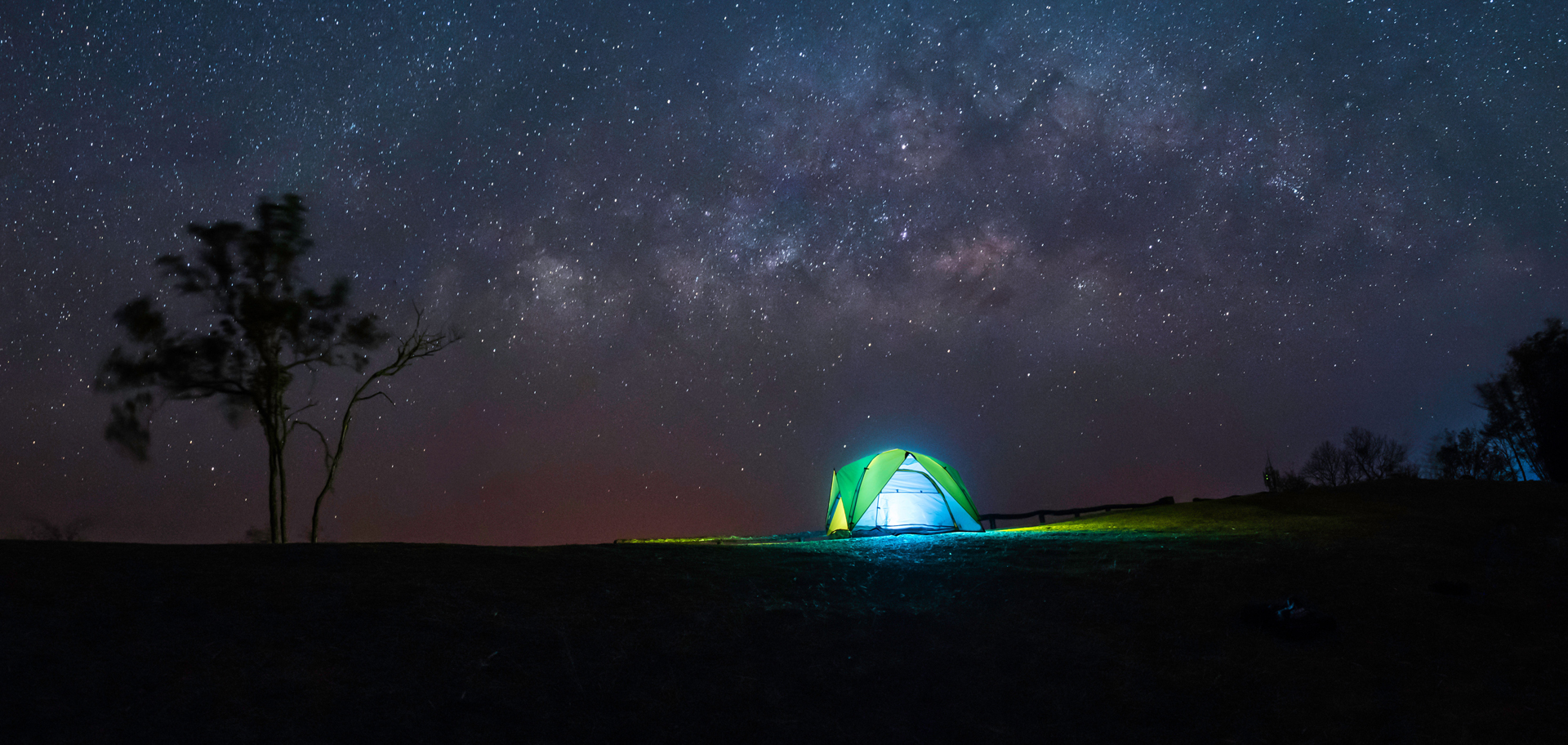
Sleeping under the stars comes with a dramatic decrease in artificial light. You might still have your phone or tablet, but you’ll be much more connected to the sun’s ascent and descent, which can help regulate your circadian rhythm, also known as your “body clock.”
Daylight savings time—the practice of advancing clocks to make better use of the longer daylight available during summer so that darkness falls at a later clock time—will end on November 2 this year. That means that we’ll set our clocks to “fall back” into standard time.
Switching the time on our clocks twice a year, however, has greater significance than just having another hour of natural light at the end of the day. The practice disrupts our circadian rhythms in ways that harm our health. In fact, scientists have found that sticking with standard time permanently would reduce obesity and stroke rates nationwide.
That supports the position that letting nature lead is usually better for us and the planet we call home. While it’s tempting to think that with our modern electric lights and indoor bedrooms, humanity has evolved beyond the influence of nature’s sunlight, our natural circadian rhythms remain strong and wild at heart, still tracking the seasonal changes in daylight.
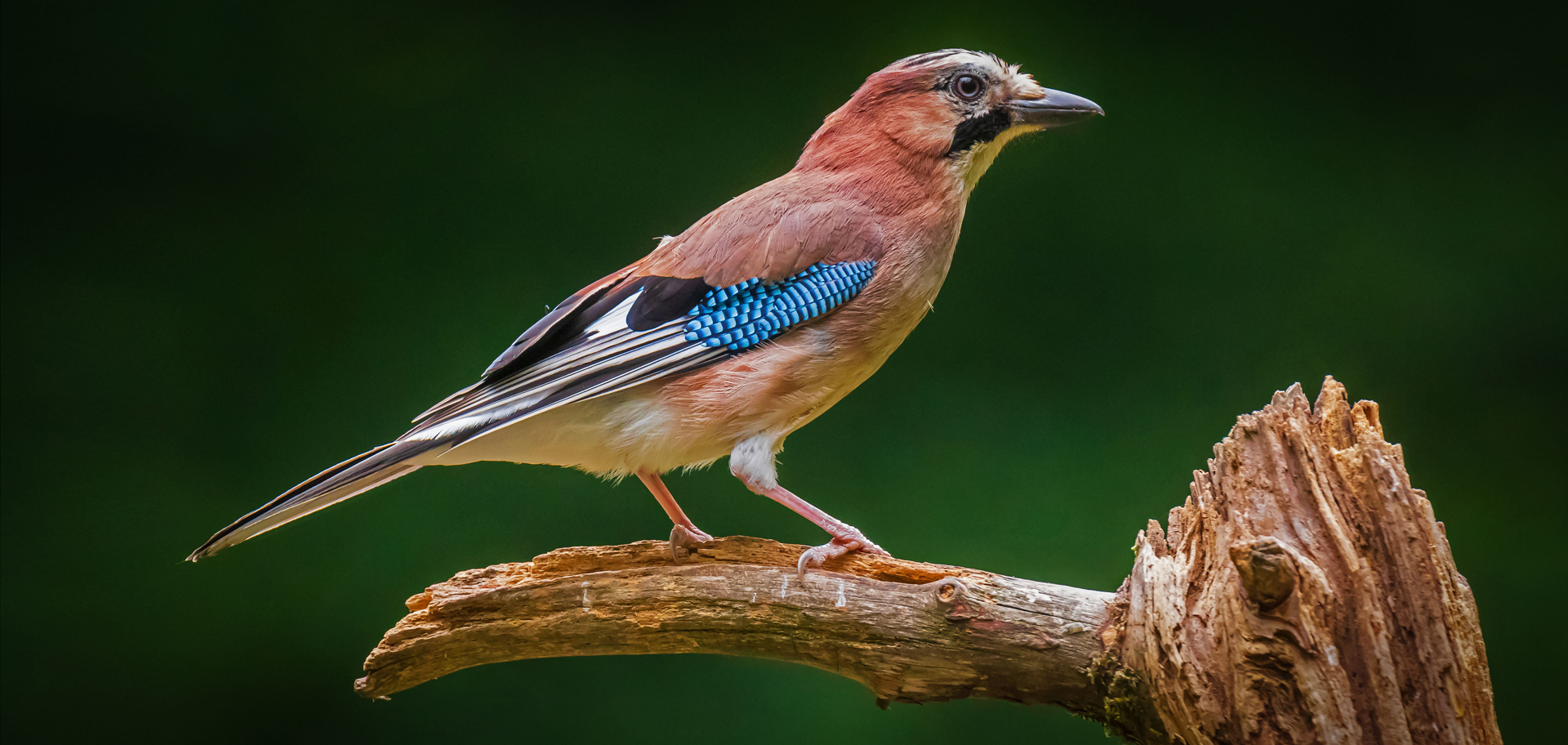
Eurasian jays are flashy corvids that have a combination of black, blue, gray, mauve-pink and white plumage. They are keystone dispersers of acorns; the seeds of some of the Eurasian continent’s climax tree species. Like all “Corvidae,” Eurasian jays are highly intelligent.
There’s another natural phenomenon that I find “timely” right now: it was recently discovered that Eurasian jays can mentally time travel—meaning that they can consciously reimagine past experiences—which previously had been thought of as solely characteristic of episodic memory in humans.
A simple shift could prevent obesity and strokes nationwide
Every spring, Americans dutifully set their clocks forward to daylight savings time; and every fall, they adjust them back to standard time—but no one seems very happy about it. The biannual time shift is not only inconvenient, it’s also known to be acutely bad for our health. The collective loss of an hour of sleep on the second Sunday in March has been linked to more heart attacks and fatal traffic accidents in the ensuing days.
However, even among people who want to end seasonal time shifts, there’s disagreement over which time policy to adopt. Supporters of permanent daylight savings time say more evening light could deter crime, save energy and give people more leisure hours after work. Golf courses and open-air malls are big proponents of this stance. A trial of permanent daylight savings time began in the early 1970s; however, it was so unpopular that it was abandoned after less than a year. Among the objectors were parents who worried about their children going to school in the morning dark. Nevertheless, the duration of daylight savings time was later increased from six months to seven months in 1986, and then to eight months 19 years later with the Energy Policy Act of 2005, which took effect in 2007.

Many children start school around 8 a.m. or earlier. This means that during daylight savings time, many young people get up and travel to school in darkness, which worries some parents.
Proponents of permanent standard time contend that more morning light is optimal for health. Organizations such as the American Academy of Sleep Medicine, the American Medical Association and the National Sleep Foundation have endorsed year-round standard time. The problem is that this is a theory without any data.
That is, until now.
Stanford Medicine researchers in California recently compared how three different time policies—permanent standard time, permanent daylight savings time and biannual shifting—affected the circadian rhythms of people throughout the country, and, in turn, their health. They found that, from a circadian perspective, we’ve made the worst choice. Either permanent standard time or permanent daylight savings time would be healthier than our seasonal waffling, with permanent standard time benefiting the most people.
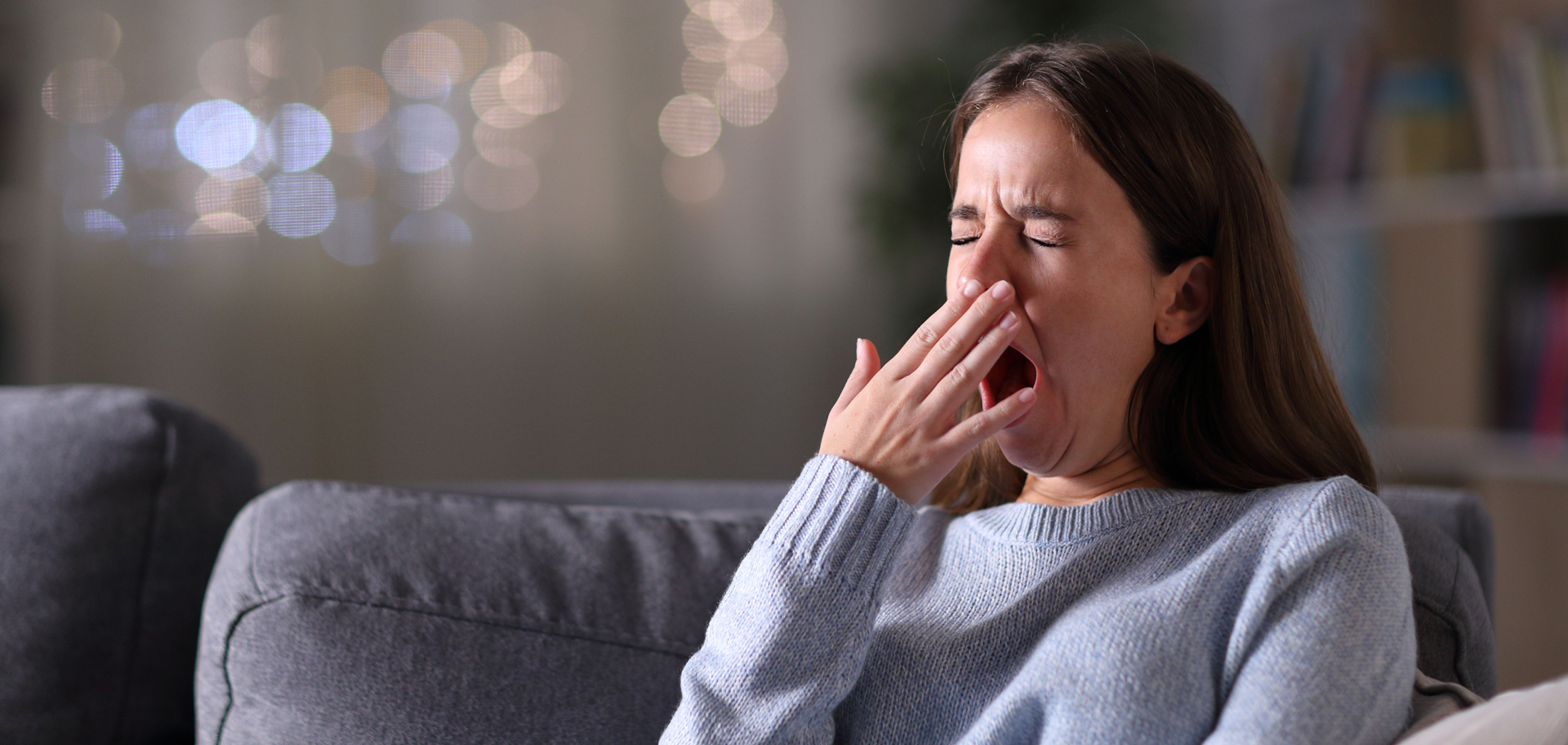
The natural phenomenon of circadian rhythm is the body’s innate, roughly 24-hour clock, which regulates many physiological processes. Yawning is associated with circadian sleep–wake cycles, occurring most frequently in the morning after waking and in the evening just prior to sleep.
Indeed, by modeling circadian impacts, health characteristics and light exposure county by county, the researchers estimated that permanent standard time would prevent some 300,000 cases of stroke per year and result in 2.6 million fewer people having obesity. Permanent daylight savings time would achieve about two-thirds of the same effect.
The scientists explain that the human circadian cycle is not exactly 24 hours—for most people, it’s about 12 minutes longer—but it can be modulated by light. When you get light in the morning, it speeds up the cycle. When you get light in the evening, it slows things down. Generally, you need more morning light and less evening light to keep well synchronized to a 24-hour day.
An out-of-sync circadian cycle has been associated with a range of poor health outcomes. The more light exposure you get at the wrong times, the weaker the circadian clock. The things that are “downstream”—for example, your energy or your immune system—don’t match up quite as well.
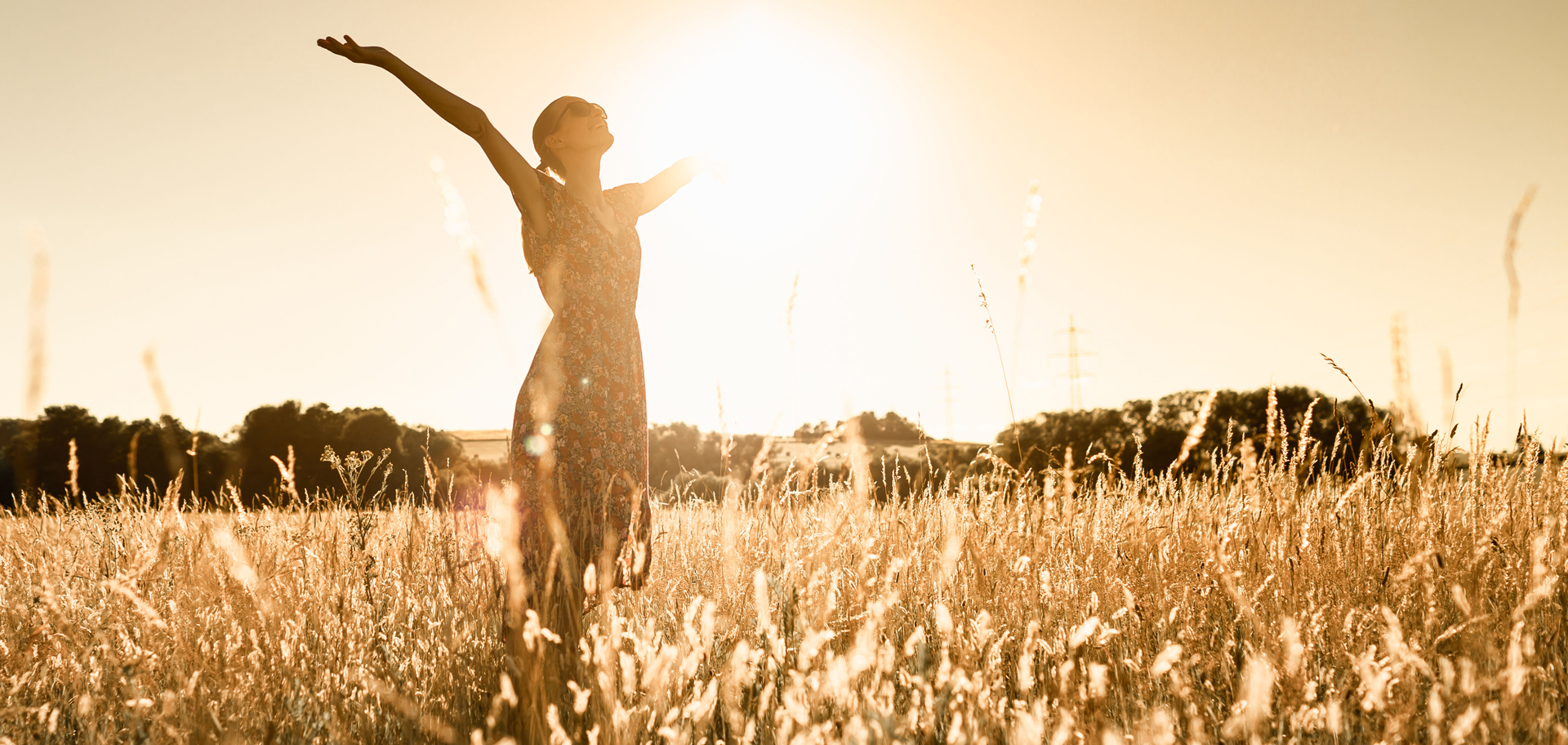
Your “chronotype” defines whether you prefer early mornings, late nights or something in between. It’s genetically determined, hardwired into your genes. You might be able to “bend” your chronotype by about 30 or 45 minutes, but if you try to change it, you’ll likely feel jet-lagged.
The Stanford Medicine researchers decided to use a mathematical model to translate light exposure, based on local sunrise and sunset times, under each time policy to circadian burden—essentially, how much a person’s innate clock must shift to keep up with the 24-hour day. They found that over a year, most people would experience the least circadian burden under permanent standard time, which prioritizes morning light. The benefits vary somewhat by a person’s location within a time zone and their chronotype—whether they prefer early mornings, late nights or something in between.
Counterintuitively, people who are “morning larks,” who make up about 15% of the population and tend to have circadian cycles shorter than 24 hours, would experience the least circadian burden under permanent daylight savings time, as more evening light would extend their circadian cycles closer to 24 hours.
To link circadian burden to specific health outcomes, the researchers analyzed county-level data from the Centers for Disease Control and Prevention on the prevalence of arthritis, cancer, chronic obstructive pulmonary disease, coronary heart disease, depression, diabetes, obesity and stroke. Their models show that permanent standard time would lower the nationwide prevalence of obesity by 0.78% and the prevalence of stroke by 0.09%, conditions influenced by circadian health. These seemingly small percentage changes in common conditions would amount to 2.6 million fewer people with obesity and 300,000 fewer cases of stroke. Under permanent daylight savings time, the nationwide prevalence of obesity would decrease by 0.51%, or 1.7 million people, and stroke by 0.04%, or 220,000 cases. As expected, the models predicted no significant difference in conditions such as arthritis that have no direct link to circadian rhythms.

Studies show that Americans spend less than one hour per day outdoors and most of their time indoors. Even in California, where the weather is great almost year-round, people spend less than 5% of their days outside.
The study might be the most evidence-based analysis of the long-term health implications of different time policies, but it’s far from the last word. For one thing, the researchers didn’t account for many factors that could influence real-life light exposure, including geography, human behavior and weather.
In their calculations, the researchers assumed consistent and relatively circadian-friendly light habits, including a 10 p.m. to 7 a.m. sleep schedule, sunlight exposure before and after work and on weekends, and indoor light exposure from 9 a.m. to 5 p.m. and after sunset. But in reality, many people have erratic sleep schedules and spend more time indoors. The researchers say that people’s light habits are probably much worse than what they assumed in the models. Even in California, they state, where the weather is great, people spend less than 5% of their days outside.
Moreover, though circadian health seems to favor permanent standard time, the results—published in the journal in the Proceedings of the National Academy of Sciences in September 2025—are not conclusive enough to overshadow other considerations. The hope is that the study will encourage similar, evidence-based analyses from other fields, such as economics and sociology.

Time policy is simply choosing which clock hours represent sunrise and sunset; it does not alter the total amount of light that there is. No policy will add light to the dark winter months.
The authors also point out that time policy is simply choosing which clock hours represent sunrise and sunset, but it doesn’t alter the total amount of light that there is. No policy will add light to the dark winter months.
Our circadian rhythms make us seasonal creatures
There’s no doubt that humans are seasonal beings, even though we might not want to admit that in our modern, electrified world. The amount of sunlight we get and the length of day influences our physiology. A new study from researchers at the University of Michigan (U-M) that was published in the journal npj Digital Medicine in May 2025 reveals that our biologically hardwired seasonal timing affects how we adjust to changes in our daily schedules.
By studying sleep data from thousands of medical residents completing a one-year internship who were using wearable health devices, such as Fitbits, the U-M team demonstrated that people’s circadian rhythms are tuned into the seasonality of sunlight. Interns are shift workers whose schedules change frequently, meaning that their sleep schedules do, too. Furthermore, these schedules are often at odds with the natural cycles of day and night. The fact that circadian rhythms in this population exhibited a seasonal dependence is a compelling argument for just how hardwired this feature is in humans, which isn’t altogether surprising, the researchers said.

Despite modern technology, humans are still seasonal beings. Our behavior, biology and psychology continue to be influenced by the changing seasons. Chronobiology supports this idea and confirms what was known by our ancestors, who lived in sync with annual natural cycles.
There’s a lot of evidence from studies of fruit flies and rodents that animals possess seasonal circadian clocks, and other researchers have thought humans’ circadian clocks may behave similarly. Now, the U-M team has provided some of the strongest support yet for this idea in observing how that seasonality plays out in a large, real-world study. And, it makes sense, state the scientists; brain physiology has been at work for millions of years trying to track the sunrise and sunset. Then industrialization came along in the blink of evolution’s eye, and we’re still racing to catch up.
This finding could enable new ways to probe and understand seasonal affective disorder, a type of depression that’s connected to seasonal changes. It could also open new areas of inquiry in a range of other health issues that are connected to the alignment of our sleep schedules and circadian clocks.
For example, researchers have previously shown that our moods are strongly affected by how well our sleep schedules coincide with our circadian rhythms. This new study, say the researchers, may have deeper implications for mental health issues, such as anxiety, but also for cardiovascular and metabolic conditions, as well. The research also showed that there is a genetic component of this seasonality in humans, which could help explain the vast differences in how strongly individuals are affected by changes in day length. Some people might be able to adapt better, but others could get worse.
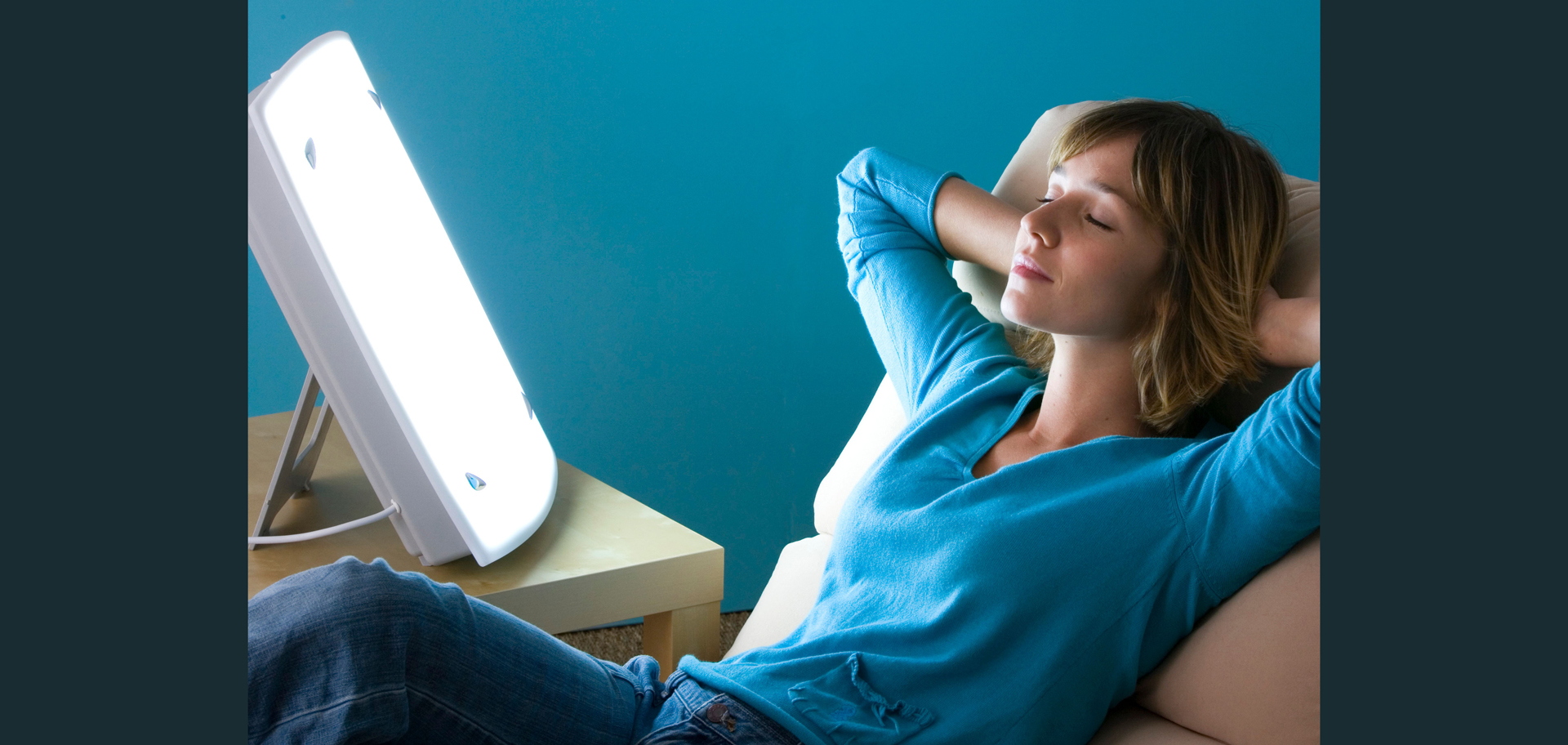
Seasonal affective disorder is a type of depression that’s connected to seasonal changes. Symptoms include lack of energy, loss of interest in usual activities, oversleeping, feelings of sadness and weight gain. Treatments include antidepressants, talk therapy and light therapy.
Exploring this genetic component will help researchers and doctors understand where individuals fall on that spectrum, but getting to that point will take more time and effort. For now, this study is an early but important step that reframes how we conceive of human circadian rhythms. While a lot of people tend to think of their circadian rhythms as a single clock, there’s not really one clock, but two. One is trying to track dawn and the other is trying to track dusk, and they’re talking to each other.
Participants in the study also provided a saliva sample for DNA testing, enabling a genetic component to be included in this study. Genetic research led by other scientists identified a specific gene that plays an important role in how other animals’ circadian clocks track seasonal changes. Humans share this gene, which allowed the U-M team to identify a small percentage of interns with slight variations in the genetic makeup of that gene. For that group of people, shift work was more disruptive to the alignment of their circadian clocks and sleep schedules over seasons.
This raises questions—especially about health implications and the influence of shift work on different individuals—that the researchers plan to explore in the future.
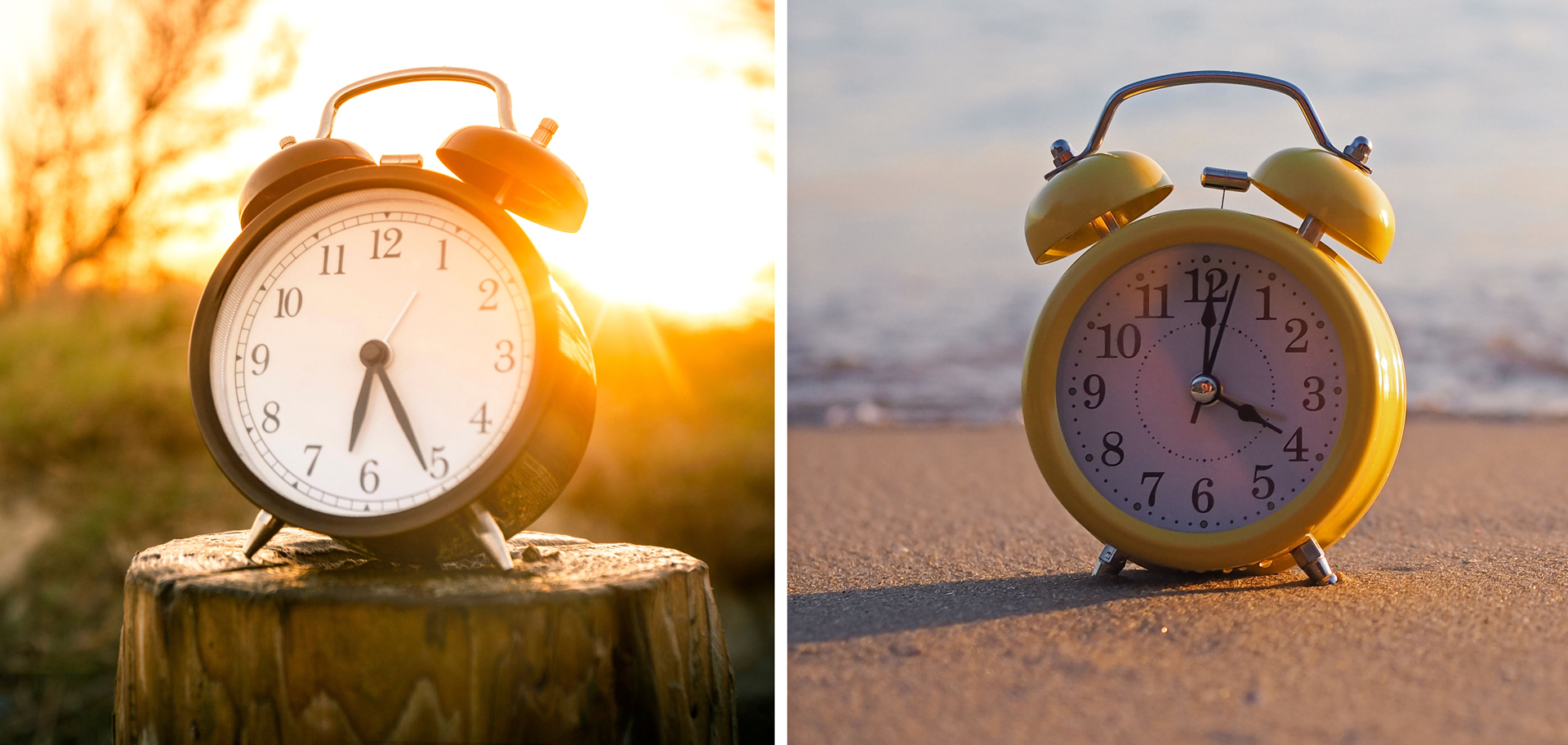
Like many people, you might think of your circadian rhythm as a single clock, but there’s really two. One is trying to track dawn while the other is trying to track dusk, and they’re talking to each other.
Eurasian jays engage in mental time travel
Another intriguing study on nature and time was published in the journal PLOS ONE in May 2024. When remembering events, humans have the ability of “mental time travel,” consciously reimagining past experiences and potentially recalling details that seemed unimportant in the moment. Some researchers have suggested that this episodic memory is unique to humans. But in a study conducted by scientists at the United Kingdom’s University of Cambridge, episodic-like memory was found to be present in seven Eurasian jays, birds that excel at remembering the location of stored food.
In an experiment, the jays watched food get placed beneath one cup in a line of four identical ones. They were then rewarded for correctly selecting the baited cup. Over several trials, the birds were trained to identify the correct cup by remembering its position in line. Subsequently, the jays were given an unexpected memory assessment: they watched food get placed beneath one of the cups—which now all had unique visual characteristics—but they were then separated from the cups for 10 minutes while the cups were relocated and rearranged. Despite the changed positions of the cups and the added time delay, the birds still correctly identified the baited cup according to its visual characteristics 70% of the time.
The authors of the PLOS ONE article write: “As the jays were able to remember details that held no specific value or relevance at the time that the memory was created, this suggests that they can record, recall and access incidental information within a remembered event. This is an ability that characterizes the type of human memory through which we mentally ‘relive’ past events (or episodes), known as episodic memory.”
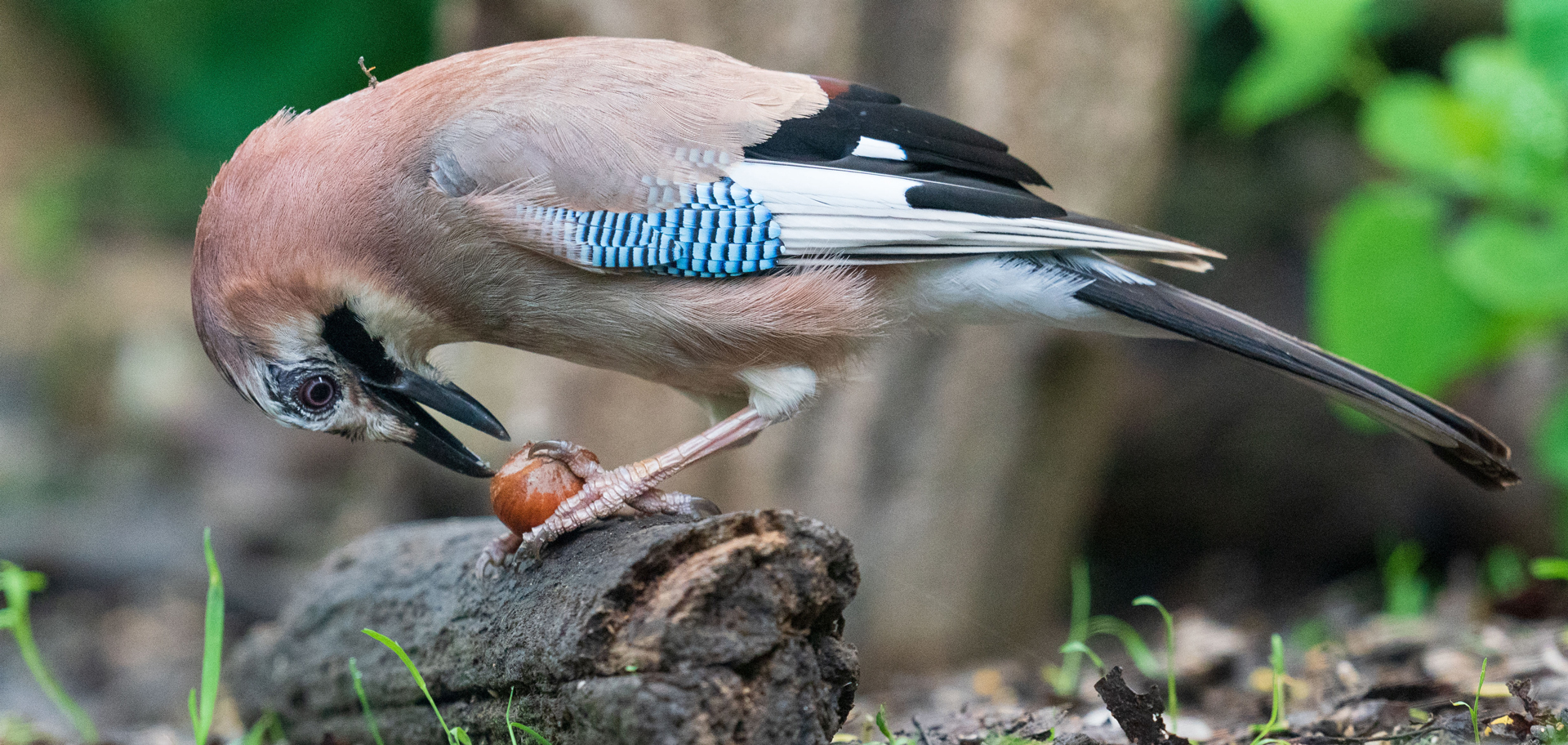
Episodic-like memory in Eurasian jays—a characteristic once thought to be solely human—might be aiding the birds in finding food stores.
These results show that even though visual differences between the cups were unimportant during training, the birds were able to notice those differences at test time and recall them later, similar to how episodic memory works in humans. This ability might aid jays in finding food stores, and the researchers suggest that future studies could investigate whether the birds can perform similar feats of memory in other, nonfood-related scenarios.
Perhaps we shouldn’t be saving the light
In the past several years, people have again tried to do away with the biannual shifting of time. The Sunshine Protection Act of 2021, which sought to make daylight savings time permanent nationwide, passed the U.S. Senate in 2022 but failed to pass the House of Representatives. Since then, other related bills have been introduced but have also not passed, meaning the twice-a-year clock adjustments continue.
Recent polls show that most Americans would prefer to eliminate the clock changes, although there is still disagreement on whether to adopt permanent daylight savings time or permanent standard time. For the U.S. to do either, a bill must be passed by both houses of Congress and signed into law. It doesn’t look like that will happen anytime soon.
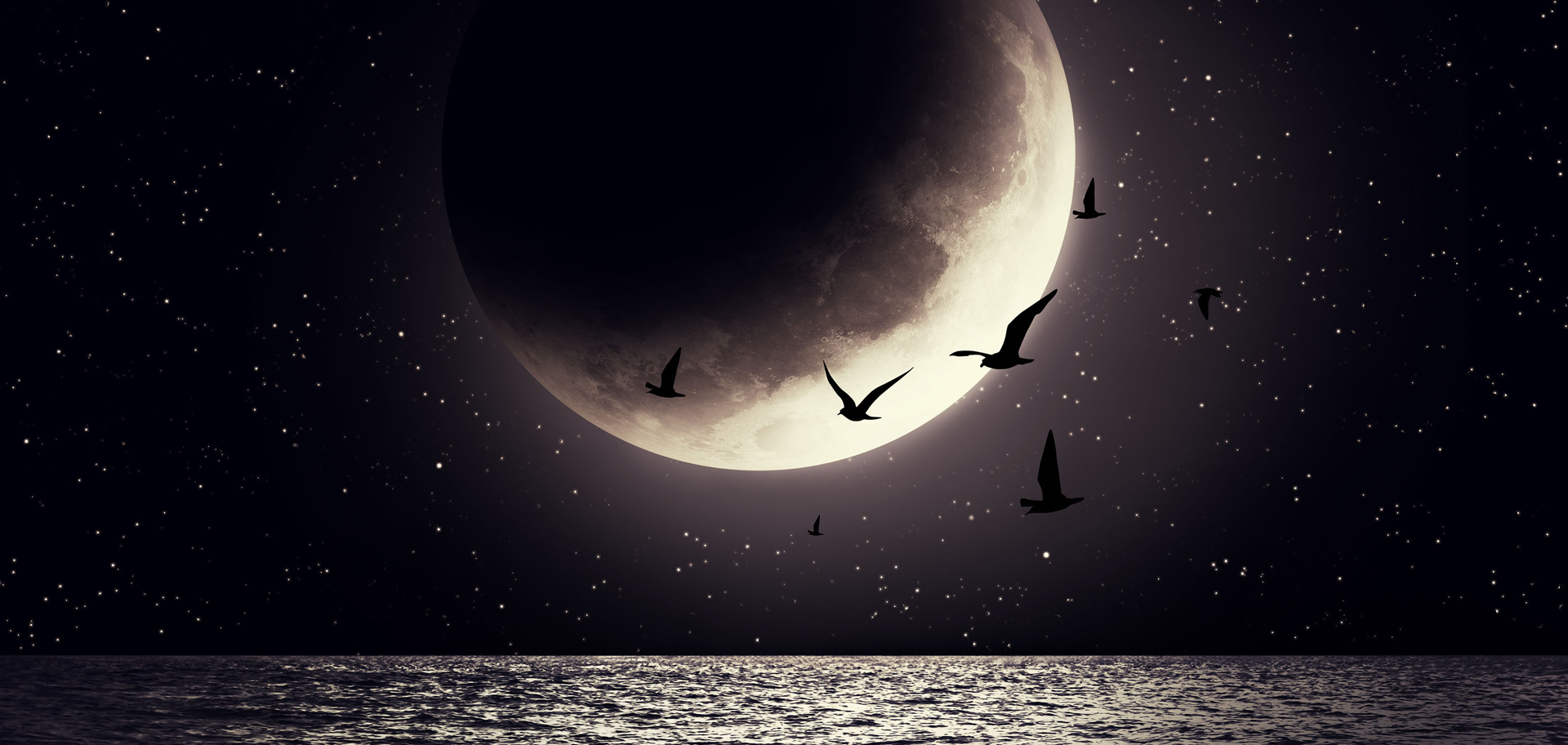
Bats, moths and migratory birds that navigate by the stars can all be disoriented by increased artificial light. Perhaps we need to give the darkness more time.
It can’t be denied, though, that daylight savings time is a human-made schedule that disregards natural light cycles. It not only affects us, but the rhythms of wildlife, too. While nonhuman animals do not care about our clocks, the shifts that result from daylight savings time can lead to conflicts with people, as nocturnal animals realign their activity patterns to avoid the humans that are active later into the evening. And as we extend our waking hours into what was once natural darkness, the resulting light pollution can confuse nocturnal wildlife. Bats, moths and migratory birds that navigate by the stars can all be disoriented by increased artificial light.
Perhaps for ourselves and for the better-than-humans among us, saving daylight by adjusting our clocks isn’t the best path for either of us, anymore.
Here’s to finding your true places and natural habitats,
Candy






























